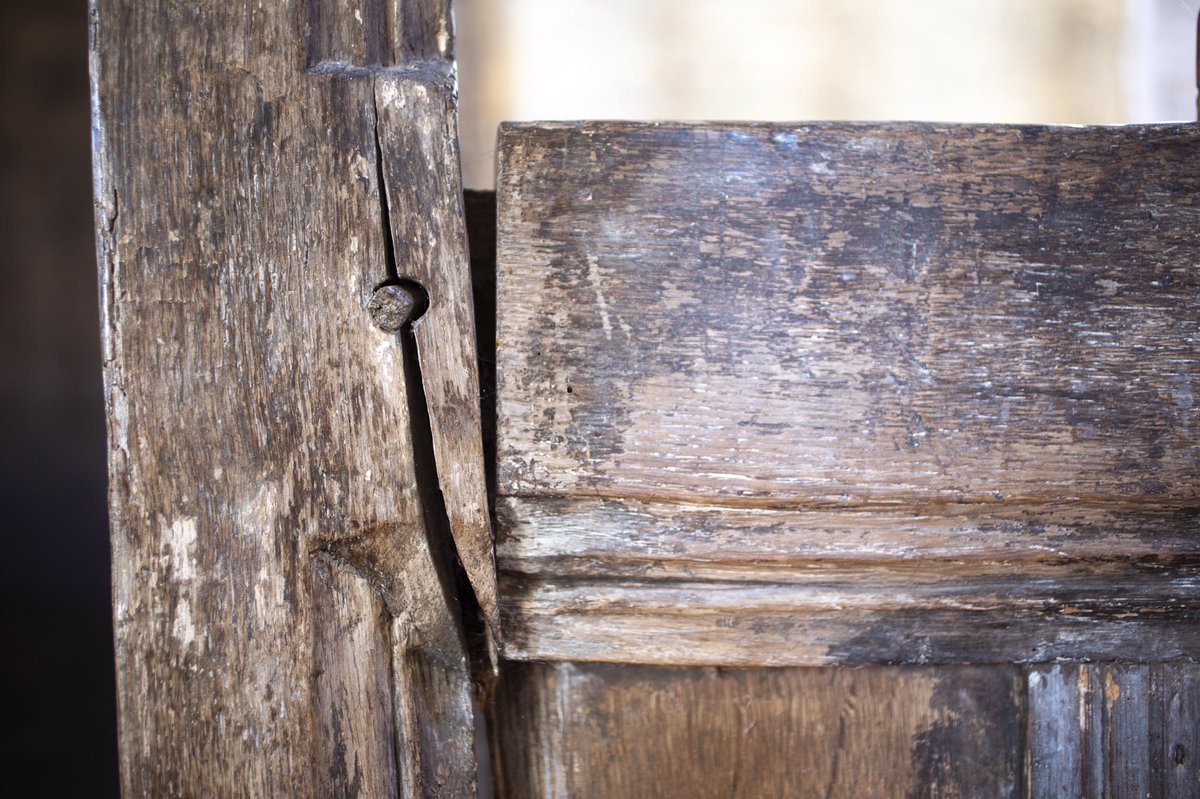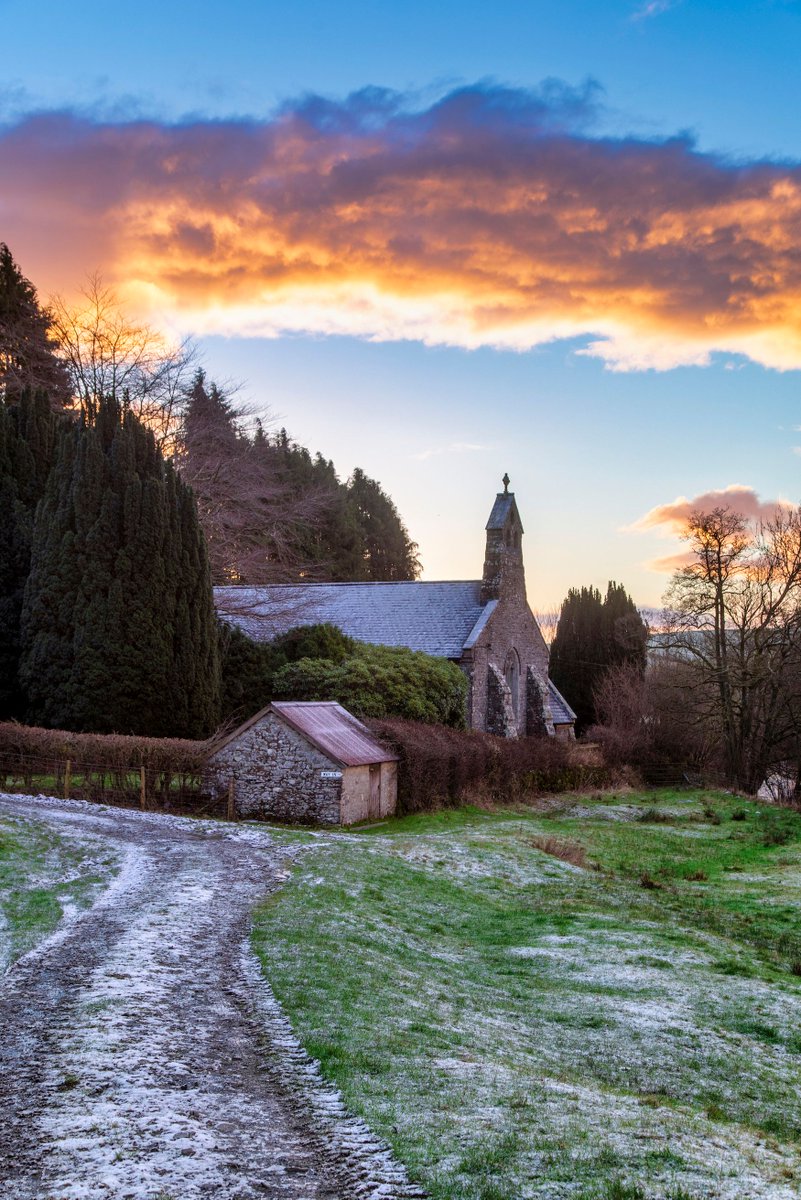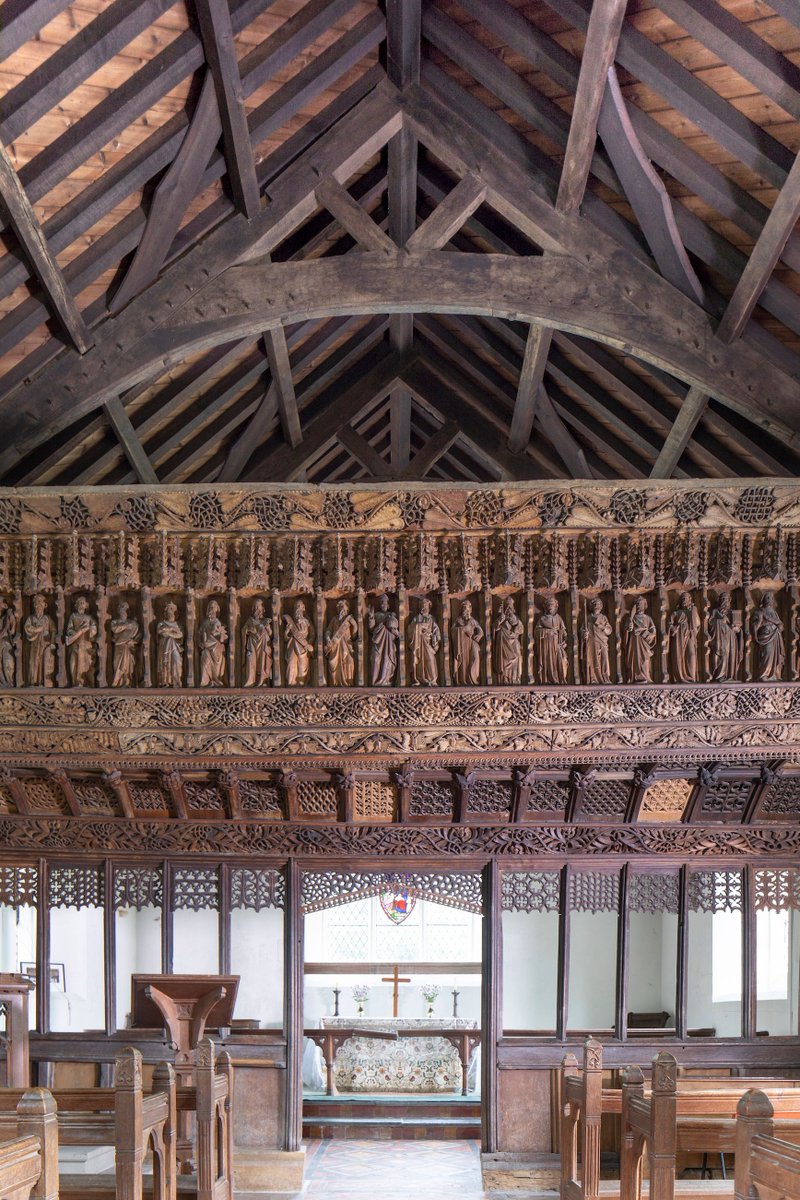Glittering alder trees once filled the valley of Gwernesney. Among the lime green leaves and yellow catkins, an Old Red Sandstone church has sat for 800 yrs.
Weathered heads watch with blank expressions as visitors pass under the broad chamfered arch of the south door..
#thread
Weathered heads watch with blank expressions as visitors pass under the broad chamfered arch of the south door..
#thread

Carved in the 1200s, this doorway, along with the lancet windows and the trefoil-headed lights in the east window are the oldest parts of the church. The windows at St Michael’s span seven centuries of styles creating an architectural collage - a fenestration i-Spy.
2/
2/

Forget the pews, the monuments or the font... inside, the eye is immediately drawn to the heavily stained rood beam and screen. Spilling over the chancel arch, the 15th-century beam is carried by three stone corbels and is pierced with a delicate foliate trail.
3/
3/

The panels at the base of the screen have a simple stencilled decoration of fleur-de-lys in golds and reds. This was added in the 19th century.
4/
4/

From there, the eye travels up to the nave’s 15th-century wagon roof. Here, a single curving vault with moulded ribs covers the ceiling.
5/
5/

At the west end you’ll find a baptistry. Made from recycled medieval screen, it’s roughly joined together. Time hasn't been kind to the woodwork. But there is a poignant beauty in its rusty hinges, missing tenons and wormy panels… A reminder of frailty and temporality...
6/


6/



… And on that cheery note: GOOD MORNING! Happy St Michael’s Day from St Michael & All Angels, Gwernesney, Monmouthshire.
#michaelmas
7/
#michaelmas
7/

• • •
Missing some Tweet in this thread? You can try to
force a refresh






















